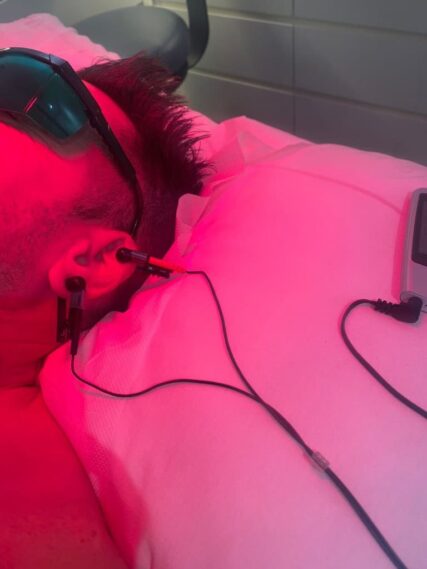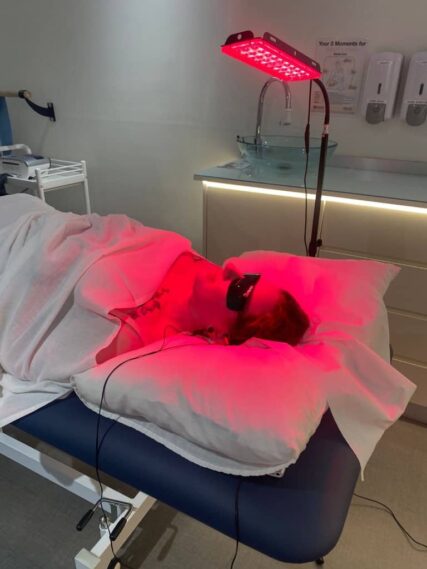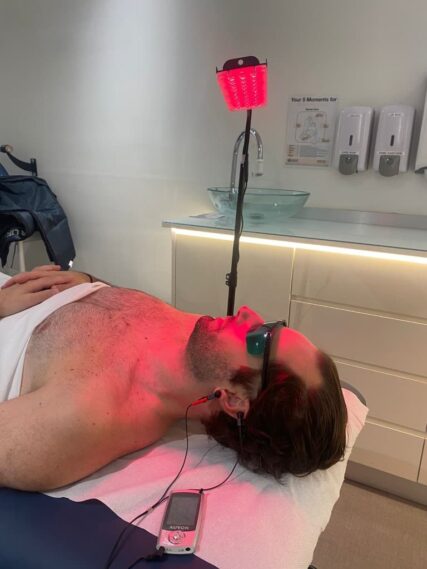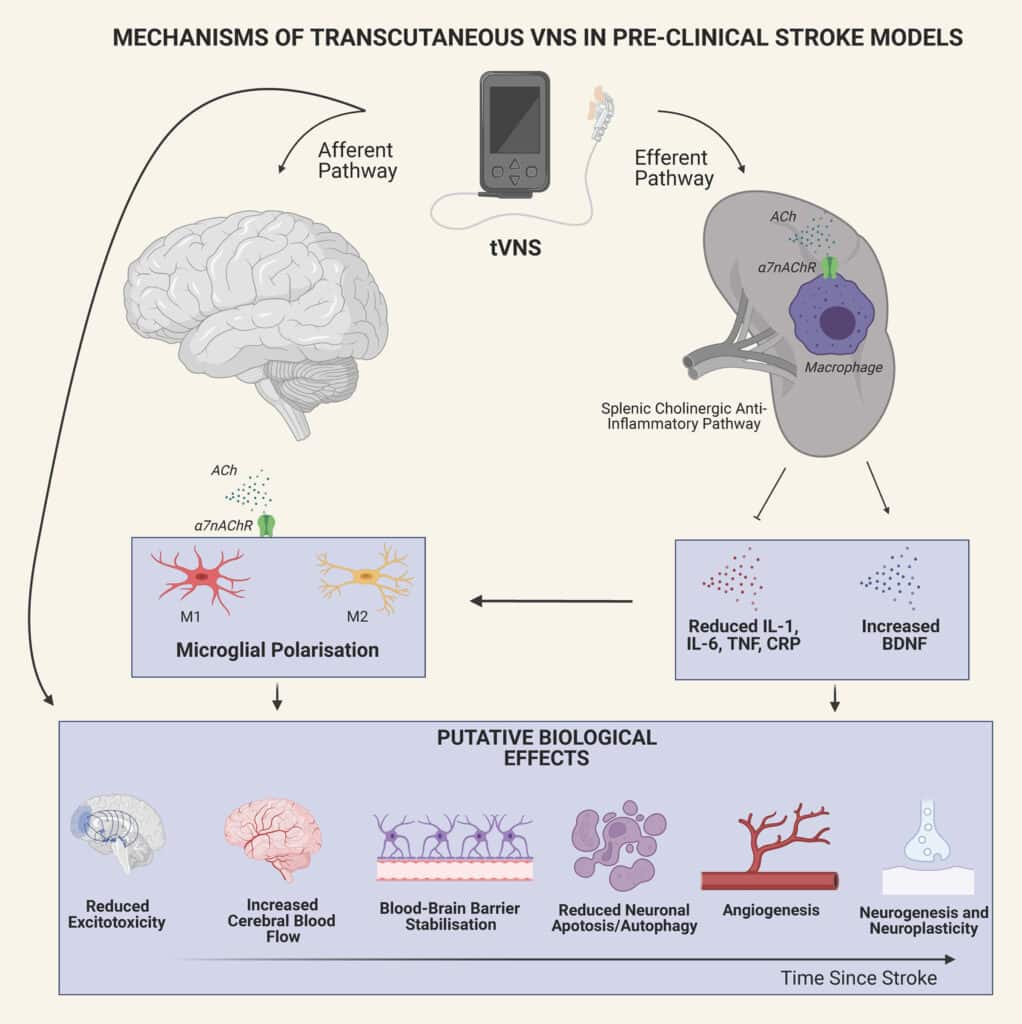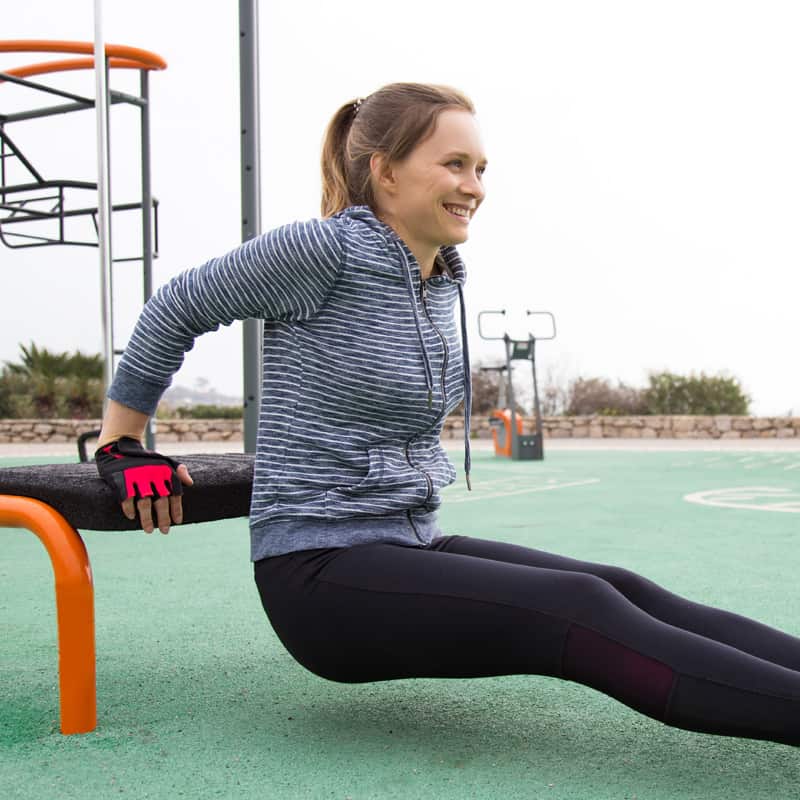Vagus Nerve Stimulation Program
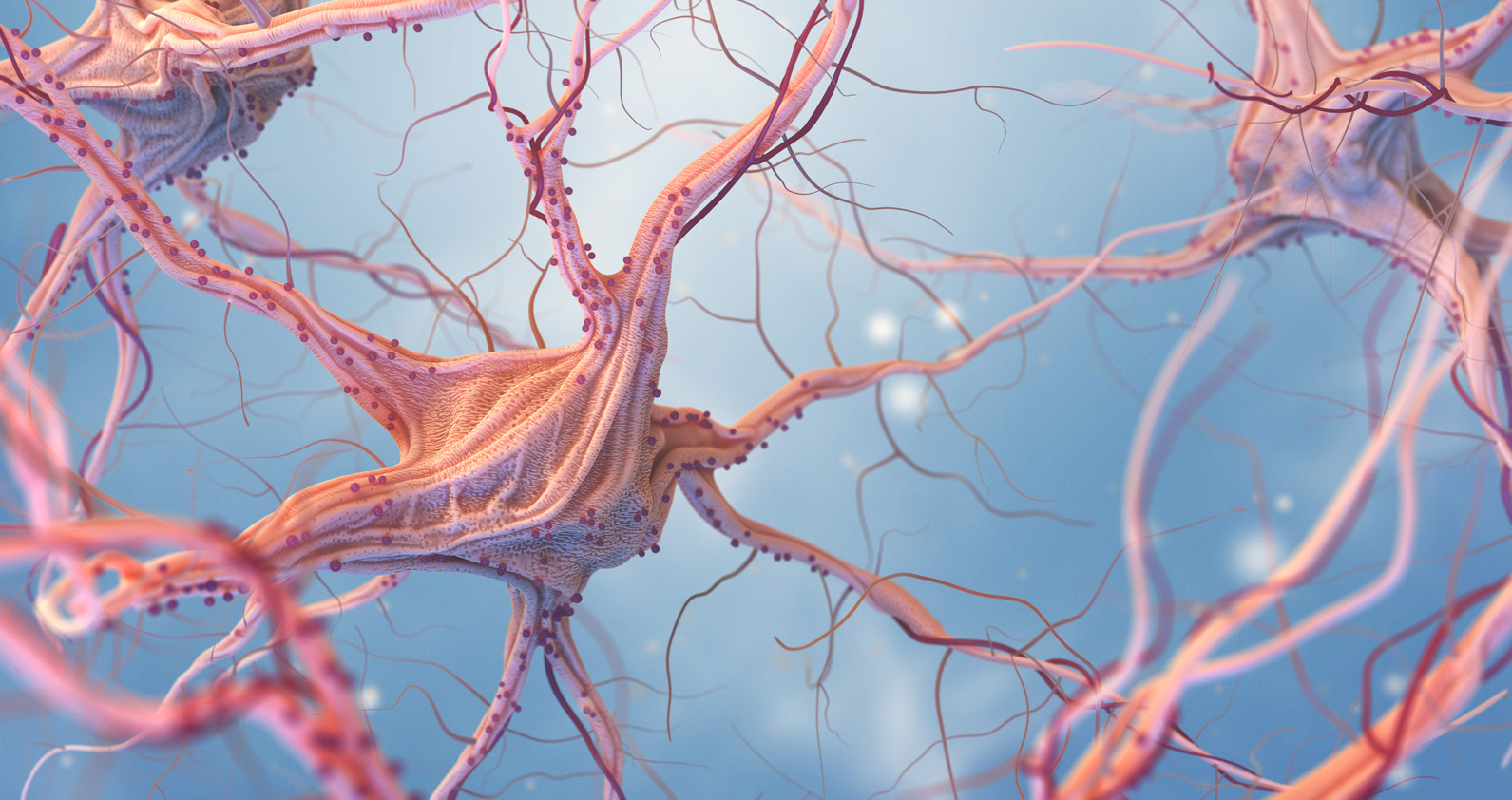
STIMULATE YOUR VAGUS NERVE, STIMULATE YOUR IMMUNE AND ANTI-INFLAMMATORY SYSTEM.
Vagus nerve is one of the longest cranial nerves in the body, extending from the brainstem to the abdomen. It plays a crucial role in the parasympathetic nervous system, which regulates involuntary bodily functions such as heart rate, digestion, and respiratory rate.
The gut microbiota produces neurotransmitters (substances that modulate your behaviour), cytokines (which send pro- and/or anti-inflammatory signals) and other metabolites related to mood, inflammation and disruption of the balance of the immune system. In the same way, prolonged stress and anxiety conditions can negatively influence the health of our microbiota.
The vagus nerve that connects the brain to almost all essential organs, including the gut. The vagus nerve is responsible for activating our alert systems by producing cortisol (stress hormone) through the so-called HPA axis (hypothalamic-pituitary-adrenal axis) that stimulates our adrenals for the secretion of stress hormones.
The central sympathetic and parasympathetic nerve fibers transmit information to the intestine, and the intestine in turn affects the brain activity through the vagus nerve and the intestinal immune system. Activation of the vagus nerve and an increase in sympa-thetic nerve activity can lead to inhibition of immune cell function and eventually lead to intestinal inflammation. Additionally, the intestinal microorganism-host interactions may play a crucial role in regulating intestinal and brain activity.
Why is important to have an optimal vagus nerve functioning?
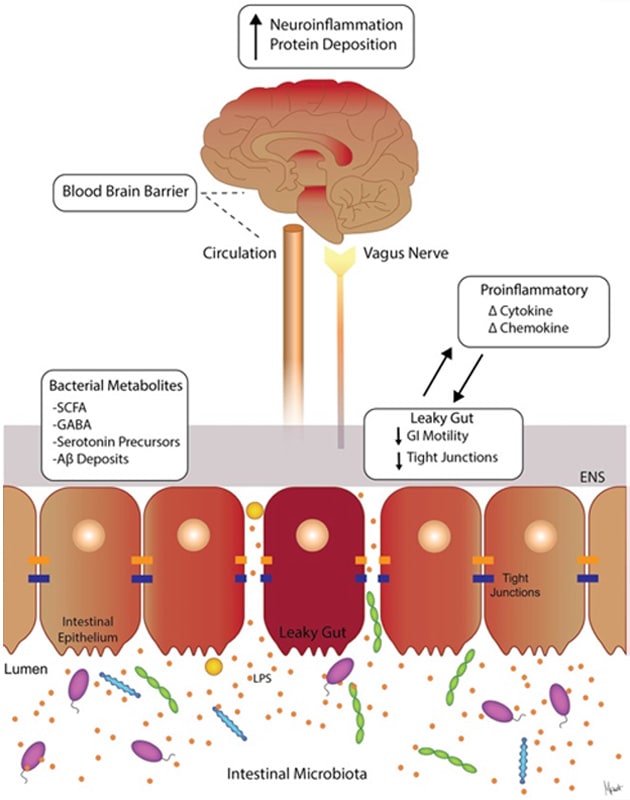
Vagus Nerve controls involuntary acts of the body, heart rate, breathing, bowel movements that allow the transit of the food bolus and the evacuation of feces.
It is also involved in the regulation of appetite, feeling of satiety, pain control and regulates energy levels, so a malfunction of the vagus nerve may be related to weight gain.
In addition, the vagus nerve is involved in emotional well-being, Feeling of well-being, behavior, cognition, learning, memory…
We feel with the intestine, and the intestine feels, thanks to the activity of the vagus nerve.
The vagus nerve helps us relax, digest and absorb food better, make us happier and more energetic. Therefore, stimulating their activity is the present and future of integrative medicine and physiotherapy.
What factors alter the functioning of the vagus nerve?

- High levels of stress
- Lack of Quality Sleep
- Toxic Personal Relationships
- Lack of movement and physical activity
- Lack of sun exposure
- Poor eating habits.
- Chronic Fatigue Syndrome (CFS) / Brain fog
- Irritable Bowel Syndrome (IBS)
- Anxiety and Stress related conditions
- Migraines
- Inflammatory conditions
- Insomnia
- Depression / Major Depressive Disorder (MDD)
- Long-Covid
- Postural Orthostatic Tachycardia Syndrome (POTS)
- Post-Viral Syndrome
- Autoimmune conditions (Rheumatoid Arthritis, Crohn’s Disease)
- Fibromyalgia
- Epilepsy
- Tinnitus
- Relaxation, mood, sleep, healthy digestion, increased HRV, as well as to alleviate symptoms of stress, burnout, adrenal fatigue.
How can Biological Physiotherapy help stimulate the vagus nerve?
- Understanding the root cause of chronic inflammatory process. It is the main entrance for the healing process.
- Manual Lymphatic Drainage techniques on the neck and abdominal areas.
- Transcutaneous Auricular Vagus Nerve Stimulation and redlight therapy.
- Body self-awareness and functional movements.
What Is Transcutaneous Auricular Vagus Nerve Stimulation?
Recently, a non-invasive form of VNS known as transcutaneous auricular vagus nerve stimulation (taVNS) has emerged. Unlike surgically-implanted VNS, taVNS is an inexpensive, low-risk, easy to administer, and portable option to modulate the vagus system.
taVNS is appealing as it allows for rapid translation of basic VNS research in exploring potential treatments of central and peripheral disease.
taVNS on the other hand, delivers electrical stimulation to the auricular branch of the vagus nerve (ABVN), an easily accessible target that innervates the human ear. Over the last decade, several groups have demonstrated the safety and tolerability of this method, including central and peripheral nervous system effects, and behavioural effects in neuropsychiatric populations. taVNS is also being explored in individuals to enhance cognitive and social functioning).
Furthermore, side-effects of taVNS are minimal, with skin irritation or redness being the most common side-effect.
- 3 SESSIONS OF BIOLOGICAL PHYSIOTHERAPY INCLUDING TRANSCUTANEOUS VAGUS NERVE STIMULATION AND REDLIGHT THERAPY
- 2 SESSIONS OF TRANSCUTANEOUS AURICULAR VAGUS NERVE STIMULATION AND RED-LIGHT THERAPY.
- DURING 3 WEEKS.
- More energy
- More aware of moving daily
- Better sleep quality
- Better mood, emotionally calmer…
- Better digestion, less bloating, better gut function…
- Less fatigue, less tiredness…
We're here for you.
And we can't wait to be a part of your health journey.

